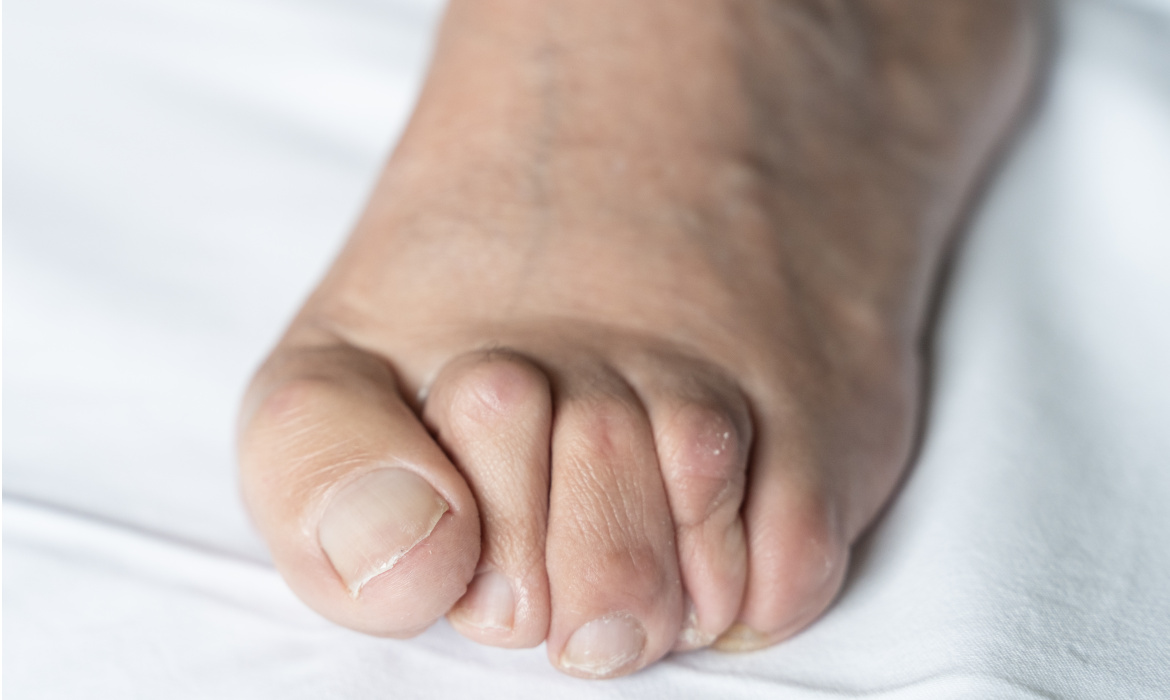Podiatry is a fascinating medical specialty thanks to the variety of conditions we see. Take hammertoe. While not life threatening, the condition can be quite painful. In the most severe cases, the pain can debilitate enough to interrupt a person’s daily life. Fortunately for patients, Beyond Podiatry clinics offers several treatments for the condition.

Hammertoe in a Nutshell
Hammertoe is a physical deformity rather than a disease or injury. It involves an abnormal bend at the middle joint of the affected toe. This bend causes the toe to curl downward – almost like a bird’s claw. Hammertoe is most likely to affect the second, third, and fourth toes.
The condition definitely generates notable symptoms. At the top of the list is pain. A hammertoe patient will experience pain in the ball of the foot, at the top of the affected toe, or both. Other symptoms include:
- Inflammation of the affected toe
- Calluses at the top of the toe
- Toe joint stiffness and rigidity
- Open sores
- Difficulty walking
It’s important to point out that open sores and problems with walking are generally limited to the most severe cases. With appropriate treatment, a typical case of hammertoe doesn’t have to get that severe.
Causes of Hammertoe
Hammertoe is one of those conditions that does not have a single cause. In podiatry, we understand that conditions throughout the body can impact the legs and feet. That means hammertoe could result from a leg or foot problem, but it doesn’t have to be. It could be the result of a condition elsewhere in the body.
Hammertoe also tends to develop over time. Its most common causes are:
- Muscle imbalances that put uneven pressure on joints and tendons
- Poorly fitting shoes (narrow, too tight, or shoes with high heels)
- Underlying conditions like diabetes and arthritis
Research shows there may be some risk factors that increase a person’s chances of developing hammertoe. For instance, gender may be a risk factor in that the condition is more common in women than men. Age and hereditary abnormalities are also risk factors.
How Hammertoe Is Treated
A podiatrist is the most qualified doctor to treat hammertoe. Most doctors prefer to start with the least aggressive treatment possible. Think of things like:
- New Footwear – Podiatrists routinely advise hammertoe patients to consider new footwear. Wider shoes with low heels and more generous toe boxes can help a lot.
- Orthotics – Orthotic inserts that redistribute pressure can offer pain relief. The same goes for pads that cushion the affected toe.
- Exercises – Exercises that stretch and strengthen the affected toe can both relieve pain and help straighten things out. Exercises are like physical therapy for the toe.
- Medications – Over-the-counter anti-inflammatory medications are yet another option. Some podiatrists recommend cortisone shots as well.
If minimally invasive treatments don’t provide enough relief, a podiatrist may recommend being more aggressive. That’s when doctors and patients start talking about surgical treatments. Surgery is invasive, but sometimes it’s the only thing that works.
Podiatrists can recommend different forms of surgery. One might recommend a tendon transfer while another recommends fusion or bone removal. The exact recommendation would depend on the patient’s condition.
Beyond Podiatry Can Help
The team here at Beyond Podiatry knows just how uncomfortable hammertoe can be. It may not threaten your life, but it can make daily life exceedingly difficult. Don’t let hammertoe dictate how you live. Instead, come see us at Beyond Podiatry. We can help. With a thorough consultation and appropriate treatment recommendations, we can offer you the opportunity for a better and more comfortable life. Make an appointment today or visit one of our clinics.
